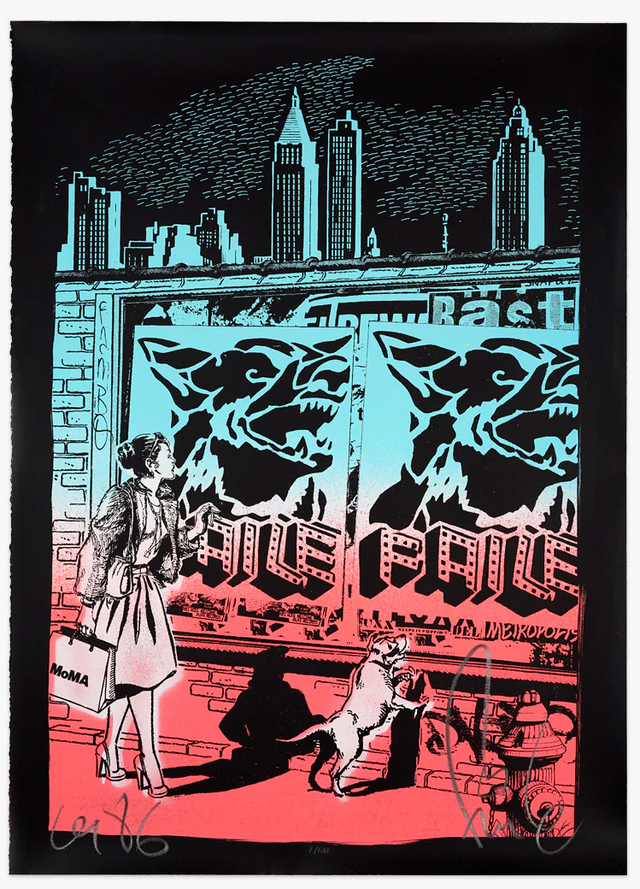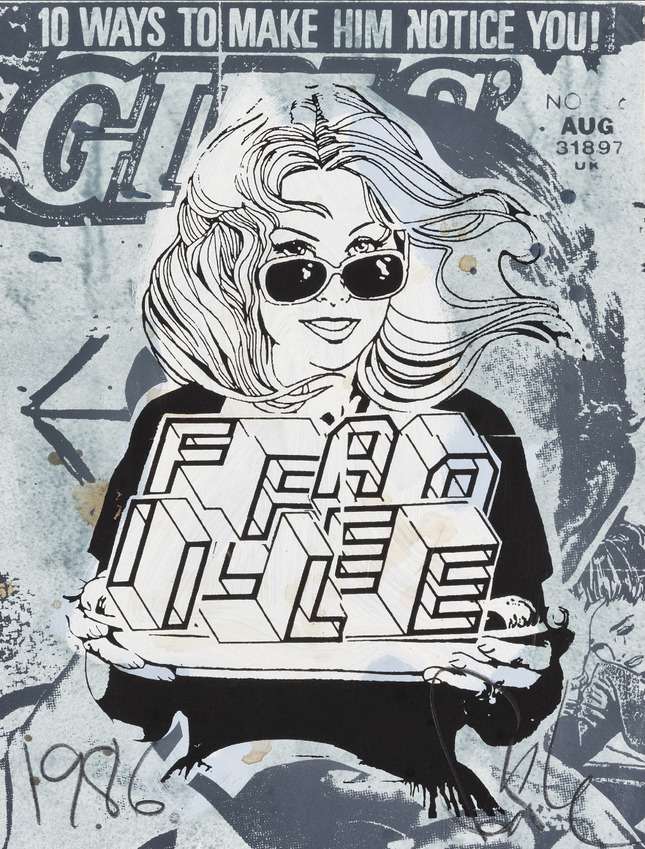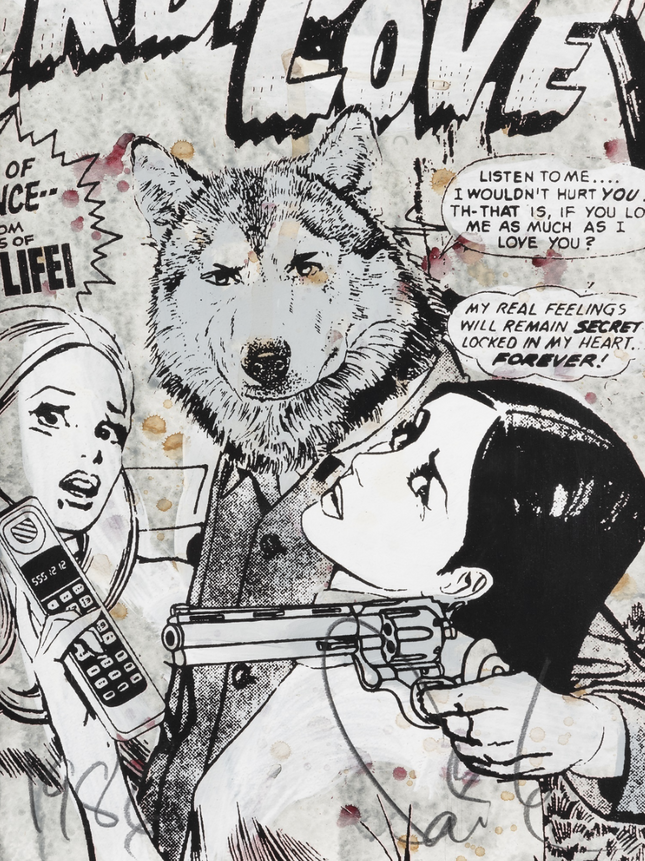
Acrylic Paint

Faile Faile Girl HPM Acrylic Silkscreen Print by Faile
Faile Girl HPM Acrylic Silkscreen Print by Faile Screen Print on Fine Art Paper Limited Edition Pop Street Art Artwork. 2007 Signed & Numbered Acrylic HPM Embellished Limited Edition of 16 Artwork Size 17.9x24 Faile is a Brooklyn-based artistic collaboration between Patrick McNeil (born 1975) and Patrick Miller (born 1976). Initially founded in 1999, the duo is known for their wide-ranging multimedia practice, recognized for its explorations of duality through a fragmented style of appropriation and collage. Working in the vein of popular culture and frequently referencing mass consumerism, Faile's work encompasses a variety of materials and techniques, including painting, silkscreening, stencils, stickers, sculpture, and more. Their art has been exhibited in a wide array of contexts, from city walls and lamp posts to galleries and museums around the world, such as Perry Rubenstein Gallery, New York; Dallas Contemporary, Dallas; and Palais de Tokyo, Paris. The name "Faile" is an anagram of "A life", which signifies the duo's shared philosophy towards their work. They are known to embrace the dichotomies of art and popular culture, acknowledging the fluidity and ubiquity of imagery in the modern world. HPM, or Hand-Painted Multiples, is a term used to describe a specific method of silkscreen printing. In HPM silkscreen printing, each piece of an edition is individually embellished or altered by the artist, thereby making each print within the edition unique. This technique can often be seen in street art and other forms of contemporary art. Silkscreen printing, also known as screen printing, is a process that involves pushing ink through a stenciled mesh screen to create a printed design. It's a popular technique used in a variety of different industries, such as fine art, fashion, and marketing, due to its versatility in adapting to different materials and surfaces. Artists like Faile often utilize HPM silkscreen printing to create limited editions of their work. This method allows them to produce a series of pieces that maintain a consistent theme or image, but with individual variations that make each piece unique. This can range from changes in color, to additional elements, to hand-finishing details. This results in each print being not just a copy, but a unique work of art.
$4,802.00

Faile Forbidden Forever HPM Acrylic Silkscreen Print by Faile
Forbidden Forever HPM Acrylic Silkscreen Print by Faile Screen Print on Fine Art Paper Limited Edition Pop Street Art Artwork. 2007 Signed & Numbered Acrylic HPM Embellished Limited Edition of 15 Artwork Size 17.9x24 Faile is a Brooklyn-based artistic collaboration between Patrick McNeil (born 1975) and Patrick Miller (born 1976). Initially founded in 1999, the duo is known for their wide-ranging multimedia practice, recognized for its explorations of duality through a fragmented style of appropriation and collage. Working in the vein of popular culture and frequently referencing mass consumerism, Faile's work encompasses a variety of materials and techniques, including painting, silkscreening, stencils, stickers, sculpture, and more. Their art has been exhibited in a wide array of contexts, from city walls and lamp posts to galleries and museums around the world, such as Perry Rubenstein Gallery, New York; Dallas Contemporary, Dallas; and Palais de Tokyo, Paris. The name "Faile" is an anagram of "A life", which signifies the duo's shared philosophy towards their work. They are known to embrace the dichotomies of art and popular culture, acknowledging the fluidity and ubiquity of imagery in the modern world. HPM, or Hand-Painted Multiples, is a term used to describe a specific method of silkscreen printing. In HPM silkscreen printing, each piece of an edition is individually embellished or altered by the artist, thereby making each print within the edition unique. This technique can often be seen in street art and other forms of contemporary art. Silkscreen printing, also known as screen printing, is a process that involves pushing ink through a stenciled mesh screen to create a printed design. It's a popular technique used in a variety of different industries, such as fine art, fashion, and marketing, due to its versatility in adapting to different materials and surfaces. Artists like Faile often utilize HPM silkscreen printing to create limited editions of their work. This method allows them to produce a series of pieces that maintain a consistent theme or image, but with individual variations that make each piece unique. This can range from changes in color, to additional elements, to hand-finishing details. This results in each print being not just a copy, but a unique work of art.
$4,802.00



